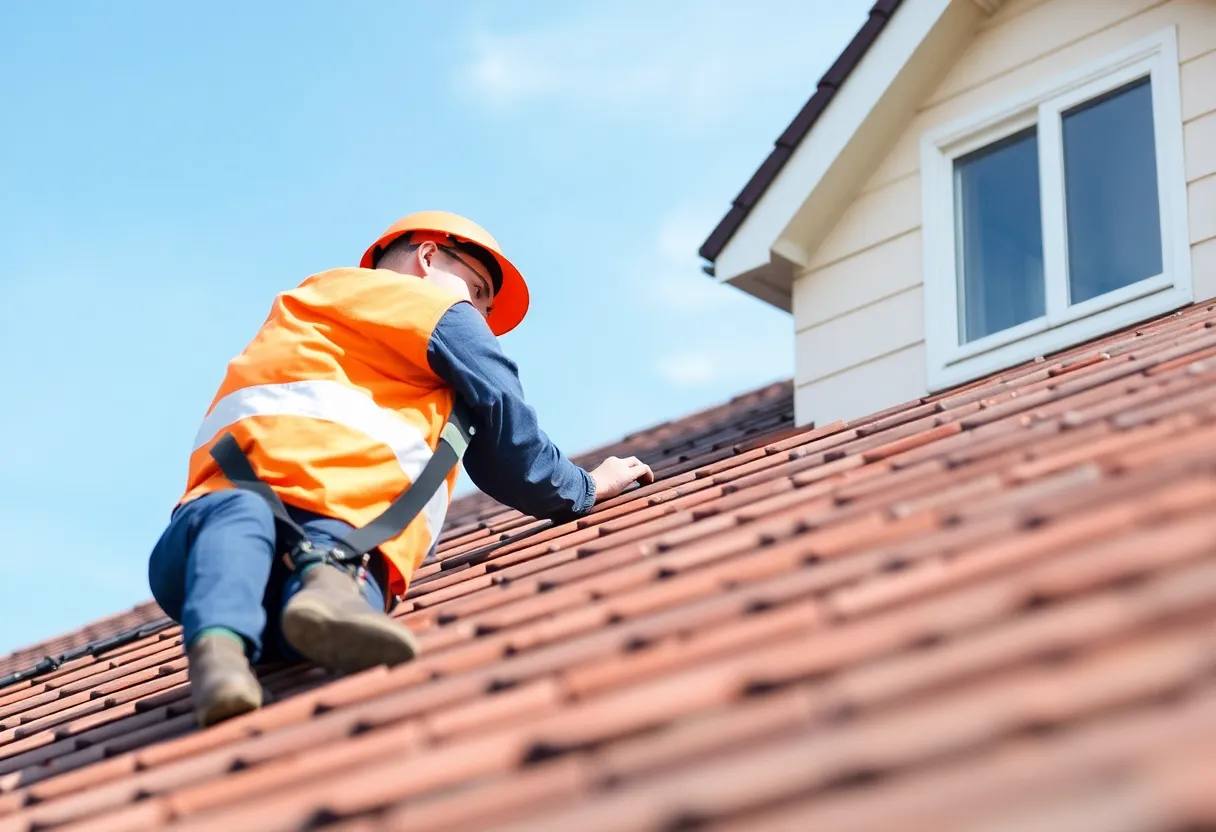How to Assess Whether You Need a Roofing Upgrade or Simply Repairs?
Your roof plays a critical role in protecting your home from the elements. However, over time, it may suffer damage or wear that necessitates either repairs or a full upgrade. Understanding the difference between these two options is vital for homeowners. This article aims to provide you with the essential steps to assess whether your roof requires a simple repair or needs a comprehensive upgrade.
Common Signs of Roofing Issues
Before deciding to repair or upgrade your roof, it’s crucial to recognize the signs that indicate a problem. Regular inspection can help you catch issues early. Here are some common signs to look out for:
1. Leaks and Water Damage
Water stains on your ceilings or walls often indicate roof leaks. These stains can worsen over time, leading to structural damage and mold growth. If you notice persistent leaks, it may suggest extensive damage to your roofing materials.
2. Missing or Damaged Shingles
Shingles protect your roof from the elements. Missing or broken shingles can compromise this protection. If a few shingles are damaged, repairs may suffice. However, extensive areas of missing shingles could necessitate a complete roof replacement.
3. Increased Energy Bills
Higher energy bills can signal that your roof is inefficient. Poor insulation or air leaks due to a compromised roof may cause heating and cooling systems to work harder, driving up energy costs.
4. Visible Sagging
A sagging roof is a serious issue that indicates structural problems. If you notice sagging in your roofline, it can often mean the underlying trusses or decking are compromised. This condition typically calls for a complete roof upgrade.
5. Age of Your Roof
Most roofs have a lifespan of 20 to 30 years, depending on the materials used. If your roof is approaching or past this age, considering an upgrade may be wise, even if visible damage isn’t apparent.
Determining the Extent of Damage
Once you recognize signs of damage, the next step is to assess the extent of that damage. Understanding whether the problem is isolated or widespread can help inform your decision.
1. Conduct a Visual Inspection
Start with a thorough visual inspection. Look for missing shingles, cracks, or signs of wear. Use binoculars to inspect high areas safely. Document your findings to evaluate later.
2. Check Roof Structure
Accessing the attic can provide insights into the roof’s condition. Look for leaks, mold, and dampness. A damp attic can indicate significant issues with the roof’s integrity.
3. Assess the Flashing
Flashing is critical for waterproofing areas susceptible to leaks, such as chimneys and vents. Ensure it is intact and free from rust. Damaged or poorly installed flashing may require repair or increased scrutiny.
Repair vs. Replacement: Making the Decision
After assessing the roof’s condition, you may find yourself weighing the options between repairs and replacement. Here’s a comprehensive decision-making framework to guide you:
1. Consider the Cost
The financial aspect is crucial in decision-making. Minor repairs usually cost significantly less than full roof replacements. However, persistent problems or extensive damage may lead to replacement options being more cost-effective in the long run. Assess the bids from contractors to understand potential expenses.
2. Evaluate the Longevity of Repairs
Temporary fixes may lead to additional long-term costs if the problems are persistent or rejected. If repairs only extend the life of your roof by a few years and the roof is already nearing the end of its lifespan, an upgrade might be a more judicious choice.
3. Environmental Conditions
Consider your local climate. If constant weather conditions such as heavy rain or snow stress your roofing system, investing in a durable roofing upgrade might be necessary. Materials designed to withstand harsh weather can enhance longevity.
4. Future Plans
Assess your long-term plans for your home. If you intend to sell in the near future, a new roof can increase property value and appeal to potential buyers. On the other hand, if you plan to stay long-term, a complete upgrade can provide peace of mind.
5. Consult with Professionals
Always consult with roofing professionals. These experts can provide a detailed assessment and recommend appropriate actions. Obtain multiple opinions when possible, as this can help clarify the nature of the damage and the best course of action.
Types of Roofing Materials to Consider
If a roofing upgrade is warranted, selecting the appropriate material is paramount. Various roofing materials offer distinct benefits and lifespans.
1. Asphalt Shingles
One of the most common materials, asphalt shingles, are affordable and easy to install. They typically last around 20 to 30 years but may require repairs or replacement sooner in adverse conditions.
2. Metal Roofing
Known for its durability, metal roofing is resistant to weather damage and can last for 40 to 70 years. It may be a more significant upfront investment but can provide cost savings over time due to fewer repairs.
3. Tile Roofing
Tile roofs are aesthetically pleasing and can last upward of 50 years. They are fire-resistant but can be more expensive both in materials and installation.
4. Slate Roofing
Slate roofs are incredibly durable, with life expectancies of 75 years or more. They are also aesthetically striking but can pose substantially higher installation costs.
Conclusion
Deciding between roof repairs and a full upgrade requires thorough evaluation. Assessing visible damage, longevity, and potential costs are crucial steps in making an informed decision. Regardless of which option you choose, it’s essential to act promptly. Prolonged damage can lead to more significant concerns down the line.
Ultimately, a strong and durable roof is an important investment in your home. By taking the time to assess your roofing needs, you can ensure protection for your property and peace of mind for years to come.





 Mays Contracting
Mays Contracting


